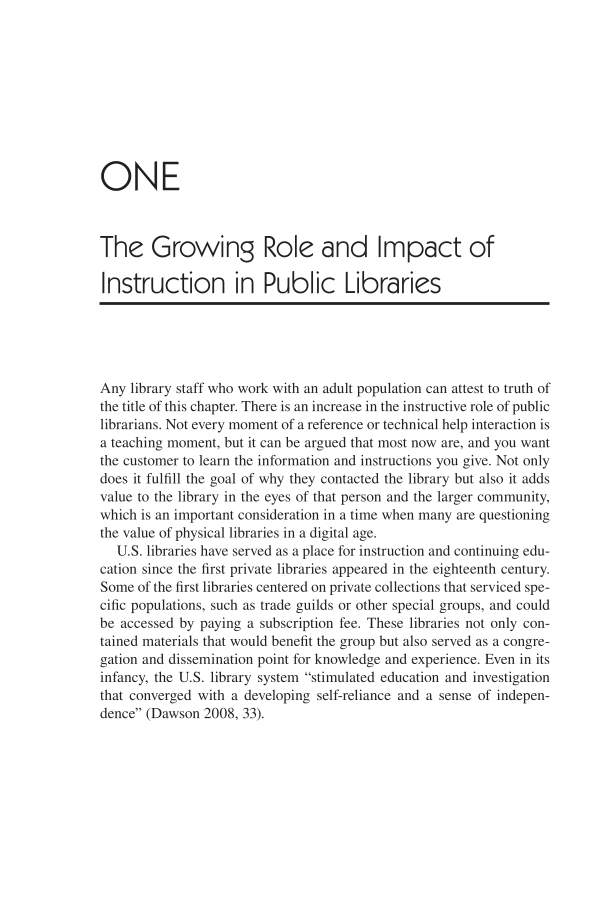ONE The Growing Role and Impact of Instruction in Public Libraries Any library staff who work with an adult population can attest to truth of the title of this chapter. There is an increase in the instructive role of public librarians. Not every moment of a reference or technical help interaction is a teaching moment, but it can be argued that most now are, and you want the customer to learn the information and instructions you give. Not only does it fulfill the goal of why they contacted the library but also it adds value to the library in the eyes of that person and the larger community, which is an important consideration in a time when many are questioning the value of physical libraries in a digital age. U.S. libraries have served as a place for instruction and continuing edu- cation since the first private libraries appeared in the eighteenth century. Some of the first libraries centered on private collections that serviced spe- cific populations, such as trade guilds or other special groups, and could be accessed by paying a subscription fee. These libraries not only con- tained materials that would benefit the group but also served as a congre- gation and dissemination point for knowledge and experience. Even in its infancy, the U.S. library system “stimulated education and investigation that converged with a developing self-reliance and a sense of indepen- dence” (Dawson 2008, 33).
Document Details My Account Print multiple pages
Print
You have printed 0 times in the last 24 hours.
Your print count will reset on at .
You may print 0 more time(s) before then.
You may print a maximum of 0 pages at a time.














































































































































